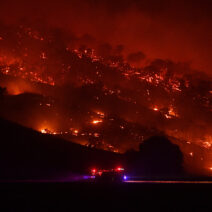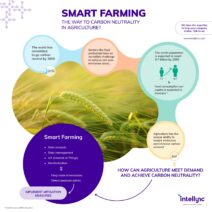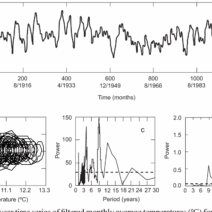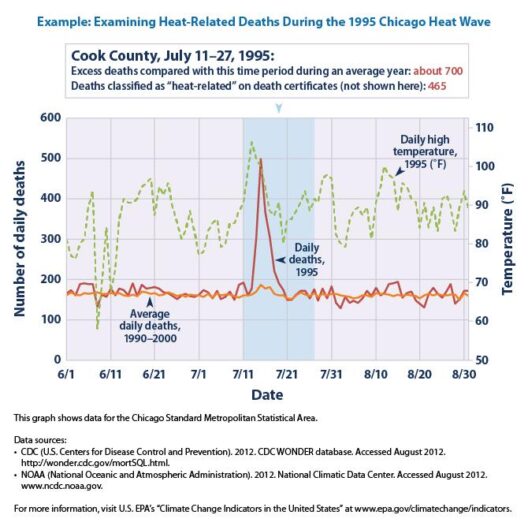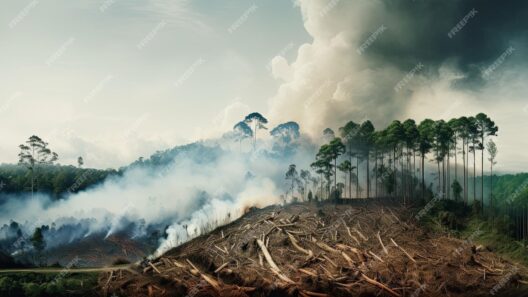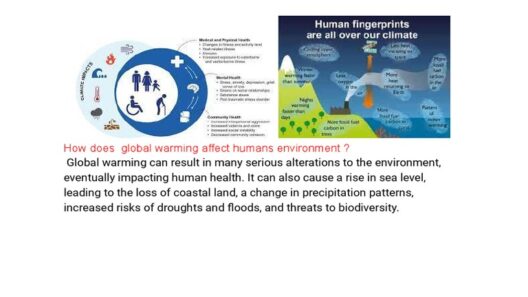The future of Michigan, particularly its iconic Great Lakes, is undergoing significant transformation due to climate change. As global temperatures rise, the repercussions are palpably visible in this region known for its stunning lakes, diverse ecosystems, and vibrant communities. This exploration delves into the myriad ways global warming will affect Michigan, underscoring ecological, economic, and social implications.
One of the most immediate consequences of climate change in Michigan is the alteration of precipitation patterns. The state is experiencing heavy rainfalls followed by prolonged droughts, disrupting the delicate balance of water systems. This fluctuation impacts agricultural productivity, as farmers may find it increasingly challenging to predict planting and harvesting seasons. Crop failures can become more common, leading to food insecurity within localized communities.
In addition to agricultural concerns, the increasing frequency and intensity of storms pose a direct threat to infrastructure. Michigan’s roadways, bridges, and buildings—many of which were designed with historical weather patterns in mind—now face unprecedented stress. As a result, maintenance costs will soar, taxing municipal budgets and diverting funds from other essential services. The cost incurred from weather-related damages fosters a precarious economic environment for many residents.
Moreover, the Great Lakes themselves are not immune to the effects of climate change. These vast bodies of freshwater are crucial to the region’s ecology and economy. Rising temperatures not only lead to increased evaporation rates but also alter water temperatures, subsequently impacting aquatic habitats. Species that depend on cooler water, such as certain types of trout, face the potential of dwindling populations as their natural habitats become inhospitable.
Invasive species are another facet of ecological disruption. The warming waters create an inviting environment for non-native species, like the zebra mussel, to thrive. These invasive species outcompete native organisms, ultimately altering the entire ecosystem balance. The Great Lakes are at risk of becoming ecosystems dominated by invasive species, diminished biodiversity, and altered food chains.
Beyond ecological impacts, the tourism industry—a cornerstone of Michigan’s economy—is also susceptible to changes wrought by climate change. The state enjoys millions of visitors each year drawn by the allure of its lakes, forests, and recreational opportunities. A decline in water quality due to warming lakes, harmful algal blooms, and diminished water levels could deter tourists. Visitors seeking pristine environments may choose alternative destinations, negatively affecting local businesses reliant on seasonal tourism.
The melting of ice cover is another significant indicator of climate change in the region. Historically, lake ice has formed a protective barrier during the winter months, preventing the lakes from warming too rapidly in the spring. As ice cover diminishes, thermoclines—the distinct temperature layers in the water column—shift, further exacerbating ecological imbalances. Fish populations, recreational activities, and natural filtration processes in the lakes can face severe disruptions.
The health of Michigan’s communities is also at stake. Water quality issues, exacerbated by climate change, loom large. Increased rainfall can lead to runoff that carries pollutants into the lakes, threatening public health. Contaminants, including pathogens and toxins, can become more prevalent, risking the safety of drinking water supplies. Additionally, health outcomes associated with heat waves—such as heat exhaustion and respiratory issues—may become increasingly common in vulnerable populations.
As Michigan grapples with these multifaceted challenges, communal response and resilience are paramount. Local governments, environmental organizations, and residents must work cohesively to prioritize climate adaptation strategies. This includes enhancing green infrastructure, improving water management systems, and fostering awareness surrounding sustainable agricultural practices. Strengthening community outreach can help individuals understand the importance of collective efforts in mitigating climate risks.
On a broader scale, policy changes at the state level can catalyze significant progress. Implementing stringent emissions regulations, investing in renewable energy, and promoting energy efficiency are foundational components of a sustainable response to climate change. Collaborations between state agencies, non-profits, and the private sector can facilitate the innovation needed to combat the escalating threat posed by global warming.
Furthermore, education plays a pivotal role in enlightening the public on climate issues. Academic institutions and environmental organizations can foster programs aimed at increasing understanding of regional climate impacts. Enhanced public knowledge empowers individuals to participate actively in sustainability initiatives, from advocacy efforts to lifestyle choices aimed at reducing carbon footprints.
As Michigan faces its melting future, the state stands at a crossroads. The choices made today will invariably sculpt the environment and circumstances for generations to come. By recognizing the urgency of the situation and collectively adopting adaptive measures, there remains hope for preserving Michigan’s unique landscapes, communities, and ecosystems. Through concerted efforts to combat climate change, a sustainable future is within reach, ensuring that the allure of the Great Lakes endures for future visitors and residents alike.
